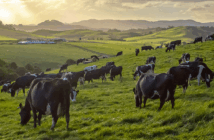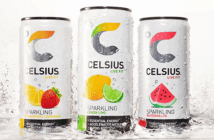
To shed some light on the matter NZ Food Technology News asked the Ministry for Primary Industries (MPI) for some help to unpack the declarations, initiatives, pledges and statements that concern this industry the most. Here they are explained.
- The Declaration on Zero Emission Shipping by 2050, and the International Aviation Climate Ambition Coalition and associated Aviation Net Zero Declaration.
These declarations demonstrate New Zealand’s commitment to strengthen global efforts to achieve zero emissions in international shipping and international aviation by 2050. They send a strong signal to the international transport industries to transition towards a low-emissions pathways as soon as possible.
What this means
This could mean that New Zealand food and beverage manufacturers see changes in their supply chains. The lower the emissions associated with importing and exporting, the lower the overall carbon footprints of their products will be.
- The Global Methane Pledge
New Zealand joined this pledge at COP26. It is a collective, global pledge to reduce methane emissions from the energy sector. Its priority is addressing methane emissions from the energy sector, such as oil and gas leaks and venting, as the sector with immediate, low-cost reduction potential. It also seeks “abatement of agricultural emissions through technology innovation as well as incentives and partnerships with farmers”.
What this means
New Zealand will contribute to this through its international collaboration and work with the Global Research Alliance for Agricultural Greenhouse Gases, which focusses on mitigation research and aims to find more ways of growing food, without growing greenhouse gas emissions.
New Zealand has already committed domestically to this with the legislated Climate Change Response Act which has set a reduction target of 24-47% below the 2017 biogenic methane emissions by 2050 and 10% of which by 2030.
- The Agricultural Innovation Mission (AIM) for Climate
New Zealand also joined the Agricultural Innovation Mission for Climate last year.
This mission focusses on boosting international investment into research for low-emissions agriculture.
What this means
As well as the potential for significant benefits domestically from findings and technology produced from the research funded under the scope of Agricultural Innovation Mission (AIM) for Climate, New Zealand can also raise global action and ambition to reduce agricultural greenhouse gas emissions by working with fellow members. This will far exceed what New Zealand could achieve alone at a domestic scale.
What can we do?
While all this might still seem a little overwhelming, Phil Jones from the Sustainable Business Network (SBN) was able to offer some practical advice for businesses trying to ensure they are prepared and operating as sustainably as they can.
Jones says often the biggest barrier to businesses taking action is simply finding the time to research what they need to do as well as the potential cost.
“Finding the right information can be a bit of a minefield in terms of Google searches, all sorts of things might come up when you type in carbon footprint,” he says.
Thankfully these sorts of issues are what SBN is all about and there are many tools available that are relevant and useful especially for smaller businesses.
“For many businesses, the Emissions Trading Act is felt through changes in price or goods such as fuel etc. This means it’s quite difficult to attribute that to the emissions trading scheme for example because these prices fluctuate anyway,” says Jones.
“Those price changes aren’t enough to drive change through smaller businesses because it’s too hidden from that.”
To offer practical help, SBN has created a Climate Action Toolbox designed specifically for SME’s to get an idea of what types of actions they could take to cut down on their environmental impact, especially their carbon footprint. This is available via www.business.govt.nz/climate. This toolbox takes users through a simple self-assessment process. They are then presented with a prioritised list of areas where they can act.
“We also think about the design of the product as well as what products and ingredients you use. How sustainable are they? Do they come from the other side of the world or is it possible to source it locally to avoid that transportation impact?”
TOP PRIORITIES
- Where possible look at opportunities to use electricity for site operations instead of gas or other types of fuel.
- Look at how good your transport is. Are there options to source locally or use lower carbon transport sources such as certain shipping methods, rail, or electric vans?
- Use lower carbon products within the actual food that is being produced or made.
A sustainability superstar
One business putting many of these practices into action is coffee roaster and supplier, Kokakо̄.
Kokakо̄’s managing director, Mike Murphy, says getting started can be as simple as changing your mindset.
“We must think about our waste streams as resources rather than as waste. It’s just the same whether you’re making pegs or food, you’ve got to follow the same processes.”
This combined with being open about reaching sustainability goals has helped the business stay motivated and critical of its performance.
“We are always gutted when we don’t meet our targets, but we are realistic that you can’t always do that,” he says.
“You can’t necessarily offset all your carbon emissions, reduce all your waste and be across all your social and environmental considerations.
“Businesses need to look at their core competency and set goals. How can they really impact their sector? If you are a beverage manufacturer, are you looking at what is the best type of packaging to use, and how can you minimise it? How can you change the game and treat sustainability not as a marketing opportunity but as an innovation opportunity? What’s my competitive advantage over my competitors?
“It’s not just sustainability, it’s innovation, and they go hand in hand.”




























































































